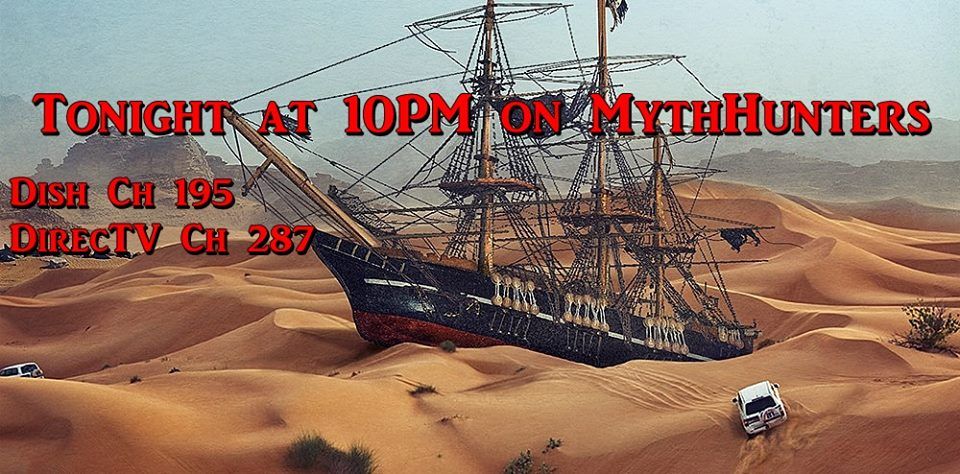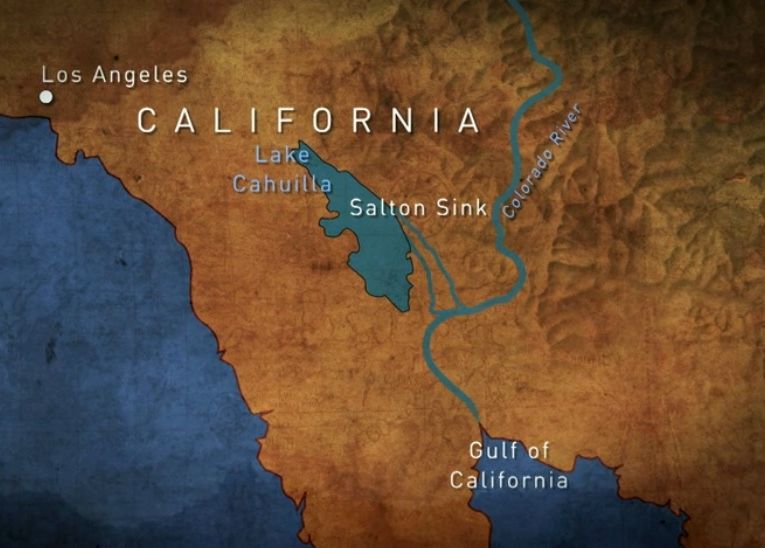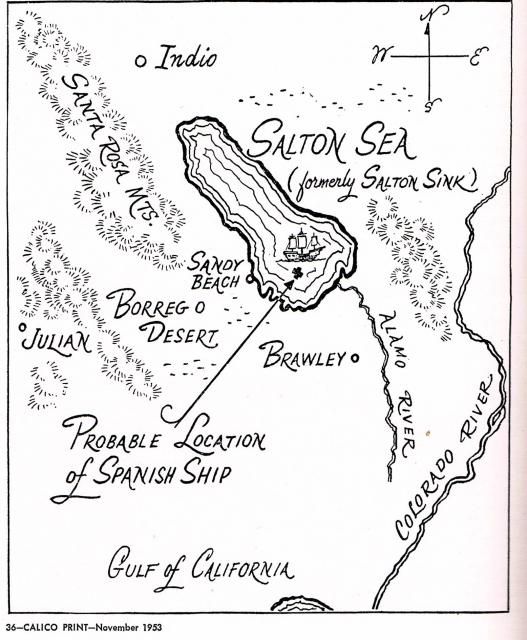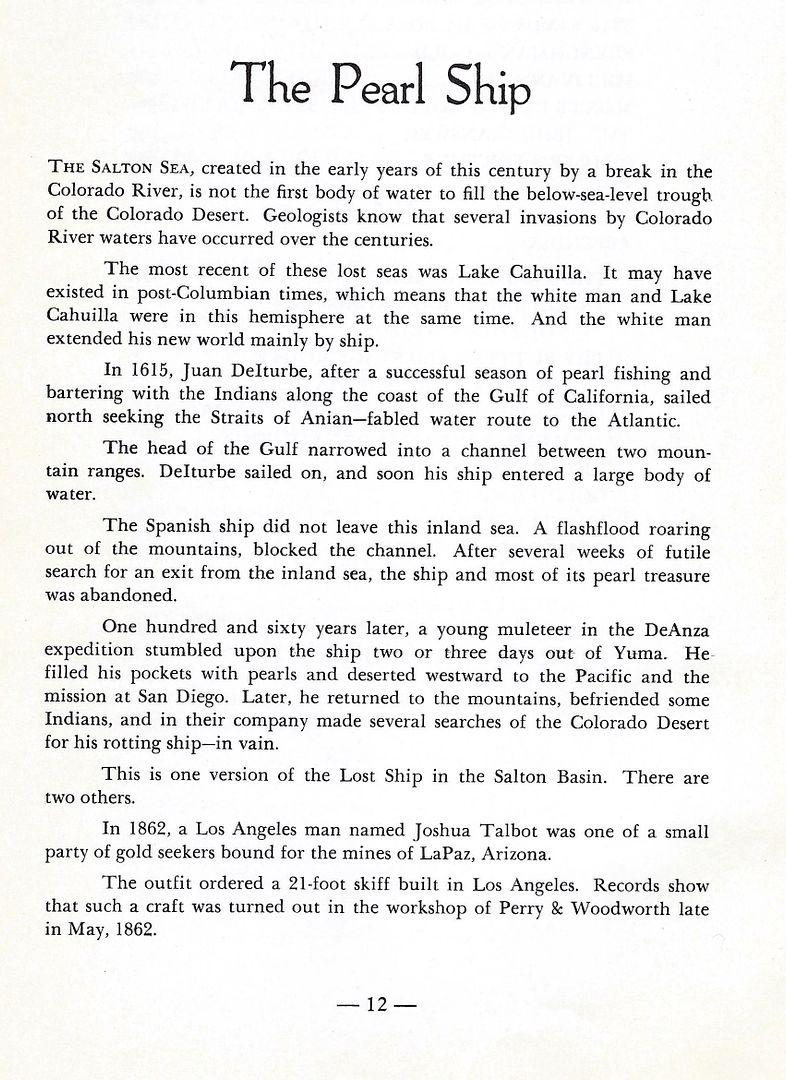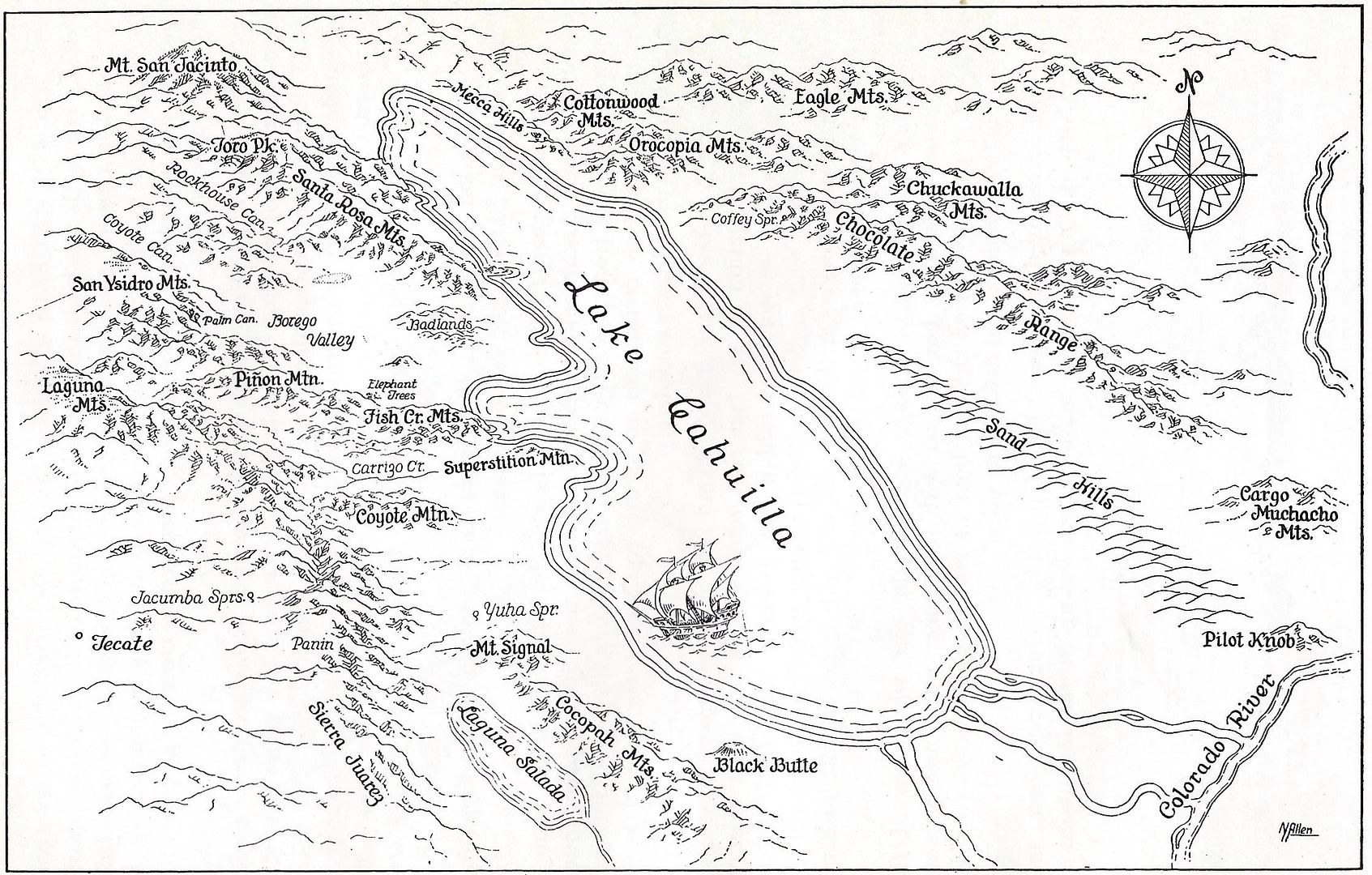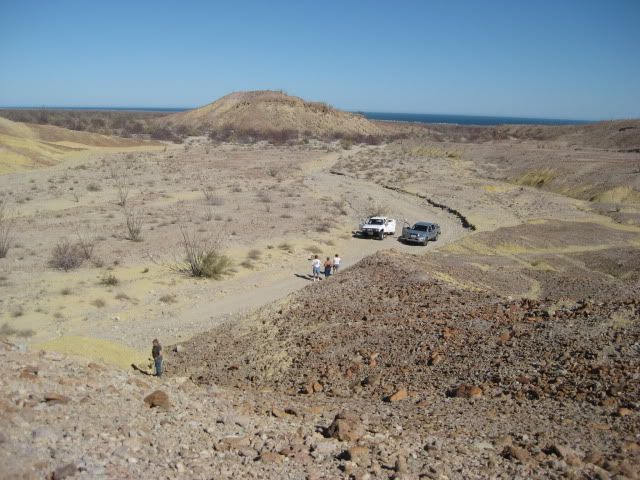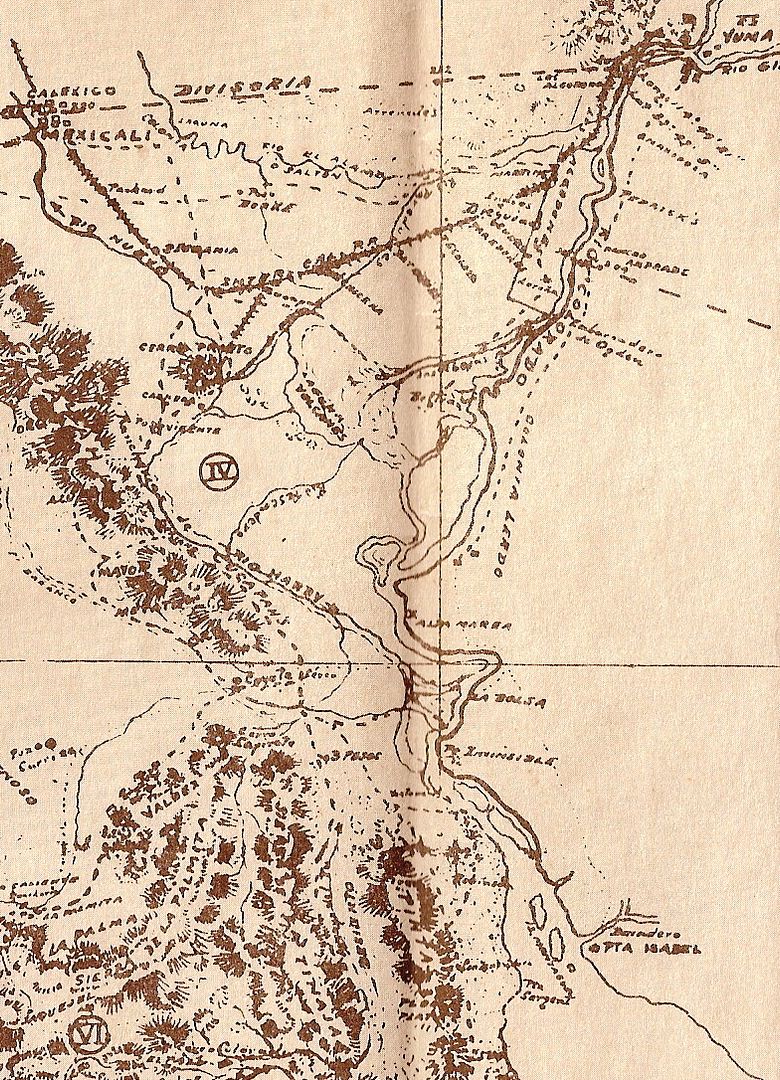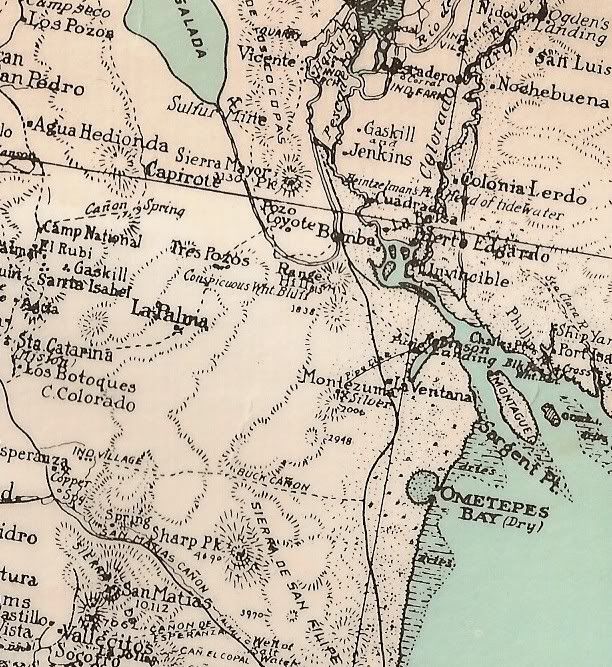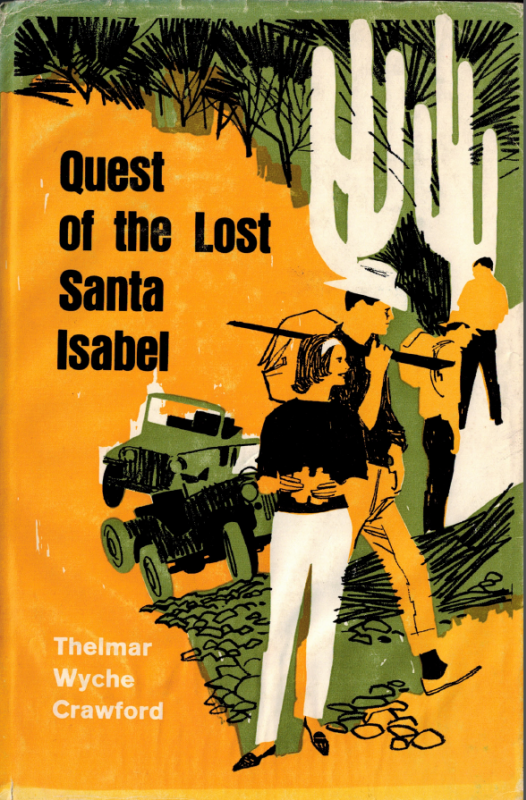
The first is the time line. There is no question that the Salton Sink was full and connected to the Sea of Cortez in the past, but if it was so during visits by early explorers then it dried up far faster than all of the other sinks on the east side of the Sierras. There would be a lot more lake during the days of prospectors and settlers.
The second question is about the vessel. Given the power of an un-dammed Colorado River meeting the significant tides of the Sea of Cortez, I just can't see a ships captain risking his ship and all their lives exploring that channel. When captain Cook was exploring the inlet that now bears his name in Alaska, he anchored his ships and explored the tributaries in his long boats. I could see that happening, but a seagoing vessel, no way!
P.S. What is the Laguna Salda version?
[Edited on 12-23-2014 by AKgringo]

